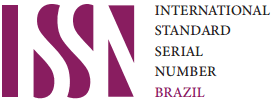Comorbilidad entre trastorno bipolar y trastorno obsesivo compulsivo: aspectos epidemiológicos, clínicos y terapéuticos.
DOI:
https://doi.org/10.25118/2763-9037.2022.v12.295Palabras clave:
Trastorno bipolar, Trastorno obsesivo-compulsivo, ComorbilidadResumen
Introducción: El trastorno bipolar (TB) y el trastorno obsesivo compulsivo (TOC) se presentan frecuentemente en forma conjunta, y su asociación tiene alto impacto clínico. Este artículo revisa los aspectos epidemiológicos, características clínicas de la asociación de TB-TOC y sus opciones de tratamiento disponibles a la fecha. Métodos: Se realizó una revisión bibliográfica en inglés, no sistemática en la base de datos “PUBMED”. En la búsqueda se incluyeron las palabras clave: trastorno obsesivo compulsivo, trastorno bipolar y comorbilidad. Resultados: Entre las muestras de pacientes con TB, la prevalencia conjunta de TOC fue alrededor del 17%. Entre las muestras de pacientes con TOC, la prevalencia de TB fue aproximadamente del 18%. Los datos sobre la validez diagnóstica de su asociación son limitados, sin embargo, los pacientes con TOC-TB parecen tener una mayor frecuencia de episodios de síntomas obsesivo-compulsivos en comparación con los pacientes con TOC sin TB. Esta presentación, parece estar asociada con un mayor número total de episodios depresivos y una ocurrencia más frecuente de conducta suicida. Los contenidos obsesivos de simetría, agresión, religiosidad y acumulación parecen ser más frecuentes en pacientes con TB-TOC. El uso de estabilizadores del estado de ánimo es la principal estrategia de tratamiento. Conclusión: La prevalencia de presentación conjunta de TB-TOC parece ser relevante. TB-TOC puede estar asociado con características clínicas particulares. Los datos sobre la validez diagnóstica de la comorbilidad no son concluyentes. La estabilización del estado de ánimo es el objetivo principal del tratamiento clínico.
Descargas
Métricas
Citas
Amerio A, Stubbs B, Odone A, Tonna M, Marchesi C, Ghaemi SN. The prevalence and predictors of comorbid bipolar disorder and obsessive-compulsive disorder: a systematic review and meta-analysis. J Affect Disord. 2015;186:99–109. http://dx.doi.org/10.1016/j.jad.2015.06.005 PMid:26233320
Jeon S, Baek JH, Yang SY, Choi Y, Ahn SW, Ha K, Hong KS. Exploration of comorbid obsessive-compulsive disorder in patients with bipolar disorder: the clinic-based prevalence rate, symptoms nature and clinical correlates. J Affect Disord. 2018;225:227–33. https://doi.org/10.1016/j.jad.2017.08.012 - PMid:28841485
Domingues-Castro MS, Torresan RC, Shavitt RG, Fontenelle LF, Ferrão YA, Rosário MC, Torres AR. Bipolar disorder comorbidity in patients with obsessive-compulsive disorder: prevalence and predictors. J Affect Disord. 2019;256(June):324–30. https://doi.org/10.1016/j.jad.2019.06.018 PMid:31201983
Timpano KR, Rubenstein LM, Murphy DL. Phenomenological features and clinical impact of affective disorders in OCD: a focus on the bipolar disorder and ocd connection. Depress Anxiety. 2012;29(3):226–33. https://doi.org/10.1002/da.20908 - PMid:22109969 - PMCid:PMC3322278
Del Casale A, Sorice S, Padovano A, Simmaco M, Ferracuti S, Lamis DA, Rapinesi C, Sani G, Girardi P, Kotzalidis GD, Pompili M Psychopharmacological treatment of obsessive-compulsive disorder (OCD). Curr Neuropharmacol. 2019;17(8):710–36. https://doi.org/10.2174/1570159X16666180813155017 - PMid:30101713 - PMCid:PMC7059159
Bunney W, Murphy D, Goodwin F, Borge G. The switch process from depression to mania: relationship to drugs which alter brain amines. Lancet. 1970;295(7655):1022–7. https://doi.org/10.1016/S0140-6736(70)91151-7
Amerio A, Odone A, Marchesi C, Ghaemi SN. Treatment of comorbid bipolar disorder and obsessive–compulsive disorder: a systematic review. J Affect Disord. 2014;166:258–63. https://doi.org/10.1016/j.jad.2014.05.026 - PMid:25012439
Amerio A, Maina G, Ghaemi SN. Updates in treating comorbid bipolar disorder and obsessive-compulsive disorder: a systematic review. J Affect Disord. 2019;256(June):433–40. https://doi.org/10.1016/j.jad.2019.06.015 - PMid:31234022
Goes FS, McCusker MG, Bienvenu OJ, MacKinnon DF, Mondimore FM, Schweizer B, DePaulo Jr JR, Potash JB. Co-morbid anxiety disorders in bipolar disorder and major depression: familial aggregation and clinical characteristics of co-morbid panic disorder, social phobia, specific phobia and obsessive-compulsive disorder. Psychol Med. 2012;42(7):1449–59. https://doi.org/10.1017/S0033291711002637 - PMid:22099954 PMCid:PMC3643205
Kazhungil F, Cholakottil A, Kattukulathil S, Kottelassal A, Vazhakalayil R. Clinical and familial profile of bipolar disorder with and without obsessive-compulsive disorder: an Indian study. Trends Psychiatry Psychother. 2017;39(4):270–5. https://doi.org/10.1590/2237-6089-2017-0061 - PMid:29267510
Koyuncu A, Tükel R, Özyildirim I, Meteris H, Yazici O. Impact of obsessive-compulsive disorder comorbidity on the sociodemographic and clinical features of patients with bipolar disorder. Compr Psychiatry. 2010;51(3):293–7. https://doi.org/10.1016/j.comppsych.2009.07.006 - PMid:20399339
Amerio A, Tonna M, Odone A, Stubbs B, Ghaemi SN. Course of illness in comorbid bipolar disorder and obsessive-compulsive disorder patients. Asian J Psychiatr. 2016;20(2016):12–4. https://doi.org/10.1016/j.ajp.2016.01.009 - PMid:27025465
Amerio A, Odone A, Liapis CC, Ghaemi SN. Diagnostic validity of comorbid bipolar disorder and obsessive-compulsive disorder: a systematic review. Acta Psychiatr Scand. 2014;129(5):343–58. https://doi.org/10.1111/acps.12250 - PMid:24506190
Shashidhara M, Sushma BR, Viswanath B, Math SB, Janardhan Reddy YC. Comorbid obsessive compulsive disorder in patients with bipolar-I disorder. J Affect Disord. 2015;174:367–71. https://doi.org/10.1016/j.jad.2014.12.019 - PMid:25545603
Zutshi A, Kamath P, Reddy YCJ. Bipolar and nonbipolar obsessive-compulsive disorder: a clinical exploration. Compr Psychiatry. 2007;48(3):245–51. https://doi.org/10.1016/j.comppsych.2006.12.005 - PMid:17445518
Chen YW, Dilsaver SC. Comorbidity for obsessive-compulsive disorder in bipolar and unipolar disorders. Psychiatry Res. 1995;59(1–2):57–64. https://doi.org/10.1016/0165-1781(95)02752-1
Amerio A. Suicide risk in comorbid bipolar disorder and obsessive-compulsive disorder: a systematic review. Indian J Psychol Med. 2019;41(2):133–7. https://doi.org/10.4103/IJPSYM.IJPSYM_367_18 - PMid:30983660 PMCid:PMC6436414
Dilsaver SC, Akiskal HS, Akiskal KK, Benazzi F. Dose-response relationship between number of comorbid anxiety disorders in adolescent bipolar/unipolar disorders, and psychosis, suicidality, substance abuse and familiality. J Affect Disord. 2006;96(3):249–58. https://doi.org/10.1016/j.jad.2006.07.008 - PMid:16904187
Yatham LN, Kennedy SH, Parikh S V., Schaffer A, Bond DJ, Frey BN, Sharma V, Goldstein BI, Rej S, Beaulieu S, Alda M, MacQueen G, Milev RV, Ravindran A, O'Donovan C, McIntosh D, Lam RW, Vazquez G, Kapczinski F, McIntyre RS, Kozicky J, Kanba S, Lafer B, Suppes T, Calabrese JR, Vieta E, Malhi G, Post RM, Berk M. Canadian Network for Mood and Anxiety Treatments (CANMAT) and International Society for Bipolar Disorders (ISBD) 2018 guidelines for the management of patients with bipolar disorder. Bipolar Disord. 2018;20(2):97–170. https://doi.org/10.1111/bdi.12609 PMid:29536616 - PMCid:PMC5947163
Perugi G, Cristina T, Franco F, Travierso MC, Hantouche E, Akiskal HS. Obsessive-compulsive-bipolar comorbidity: a systematic exploration of clinical features and treatment outcome. J Clin Psychiatry. 2002;63(12):1129–34. https://doi.org/10.4088/JCP.v63n1207 - PMid:12523872
Amerio A, Odone A. Aripiprazole augmentation in treating comorbid bipolar disorder and obsessive-compulsive disorder. Gen Psychiatry. 2018;31(3). https://doi.org/10.1136/gpsych-2018-100007 - PMid:30582130 - PMCid:PMC6234965
Lai J, Lu Q, Zhang P, Xu T, Xu Y, Hu S. Aripiprazole augmentation in managing comorbid obsessive-compulsive disorder and bipolar disorder: a case with suicidal attempts. Neuropsychiatr Dis Treat. 2017;13:87–90. https://doi.org/10.2147/NDT.S122316 - PMid:28096676 PMCid:PMC5207469
Uguz F. Successful treatment of comorbid obsessive-compulsive disorder with aripiprazole in three patients with bipolar disorder. Gen Hosp Psychiatry. 2010;32(5):556–8. https://doi.org/10.1016/j.genhosppsych.2010.07.004 - PMid:20851277
Sahraian A, Ehsaei Z, Mowla A. Aripiprazole as an adjuvant treatment for obsessive and compulsive symptoms in manic phase of bipolar disorder: a randomized, double-blind, placebo-controlled clinical trial. Prog Neuro-Psychopharmacology Biol Psychiatry. 2018;84(March):267–71. https://doi.org/10.1016/j.pnpbp.2018.03.014 - PMid:29544694
Marazziti D, Pfanner C, Dell’Osso B, Ciapparelli A, Presta S, Corretti G, Di Nasso E, Mungai F, Dell’osso L. Augmentation strategy with olanzapine in resistant obsessive compulsive disorder: an Italian long-term open-label study. J Psychopharmacol. 2005;19(4):392–4. https://doi.org/10.1177/0269881105053299 - PMid:15982994
Petrikis P, Andreou C, Bozikas Vasilis, Karavatos A. Effective use of olanzapine for obsessive-compulsive symptoms in a patient with bipolar disorder. Can J Psychiatry. 2004;49(8):572–3. https://doi.org/10.1177/070674370404900812 - PMid:15453108
Sahraian A, Ghahremanpouri B, Mowla A. Is quetiapine effective for obsessive and compulsive symptoms in patients with bipolar disorder? A randomized, double-blind, placebo-controlled clinical trial. CNS Spectr. 2021:1-5. https://doi.org/10.1017/S1092852921000572 - PMid:34027853
Poyurovsky M, Weizman A. Quetiapine for bipolar depressive episode in obsessive-compulsive disorder patients maintained on selective serotonin reuptake inhibitor treatment. Clin Neuropharmacol. 2021;44(4):123–5. https://doi.org/10.1097/WNF.0000000000000456 - PMid:33811191
Pfanner C, Marazziti D, Dell’Osso L, Presta S, Gemignani A, Milanfranchi A, Cassano GB. Risperidone augmentation in refractory obsessive-compulsive disorder: an open-label study. Int Clin Psychopharmacol. 2000;15(5):297–301. https://doi.org/10.1097/00004850-200015050-00007 - PMid:10993132
Herstowska M, Cubała WJ. Escitalopram efficacy in obsessive-compulsive disorder comorbid with bipolar disorder. Dusunen Adam J Psychiatry Neurol Sci. 2013;26:115–116. https://doi.org/10.5350/DAJPN2013260115
Amerio A, Tonna M, Odone A, Stubbs B, Ghaemi SN. Treatment of comorbid bipolar disorder and anxiety disorders: a great challenge to modern psychiatry. Aust N Z J Psychiatry. 2015;50(7):699–700. https://doi.org/10.1177/0004867415617839 - PMid:26619897
Sahraian A, Jahromi LR, Ghanizadeh A, Mowla A. Memantine as an adjuvant treatment for obsessive compulsive symptoms in manic phase of bipolar disorder: a randomized, double-blind, placebo-controlled clinical trial. J Clin Psychopharmacol. 2017;37(2):246–9. https://doi.org/10.1097/JCP.0000000000000651 - PMid:28099183
Baer L, Minichiello WE, Jenike MA. Behavioral treatment in two cases of obsessive-complusive disorder with concomitant bipolar affective disorder. Am J Psychiatry. 1985;142(3):358–60. https://doi.org/10.1176/ajp.142.3.358 - PMid:3970279
Chang CH, Chen SY, Hsiao YL, Chen SJ, Tsai ST, Chang CH, Yu-Yin Y, Hsin-Chi T. Hypomania-like syndrome induced by deep brain stimulation of bilateral anterior limbs of the internal capsules. Prog Neuro-Psychopharmacology Biol Psychiatry. 2009;33(5):906–7. https://doi.org/10.1016/j.pnpbp.2009.04.001 - PMid:19356739
Rask O, Suneson K, Holmström E, Bäckström B, Johansson BA. Electroconvulsive therapy for manic state with mixed and psychotic features in a teenager with bipolar disorder and comorbid episodic obsessive-compulsive disorder: a case report. J Med Case Rep. 2017;11(1):1–6. https://doi.org/10.1186/s13256-017-1508-8 - PMid:29228982 - PMCid:PMC5725801
Perugi G, Akiskal HS, Pfanner C, Presta S, Gemignani A, Milanfranchi A, Lensi P, Ravagli S, Cassano G. The clinical impact of bipolar and unipolar affective comorbidity on obsessive-compulsive disorder. J Affect Disord. 1997;46(1):15–23. https://doi.org/10.1016/S0165-0327(97)00075-X
Mahasuar R, Janardhan Reddy YC, Math SB. Obsessive-compulsive disorder with and without bipolar disorder. Psychiatry Clin Neurosci. 2011;65(5):423–33. https://doi.org/10.1111/j.1440-1819.2011.02247.x - PMid:21851451
Raşit T, Serap Batmaz O, Ilker O, Banu A, Erhan E, Atiye S, Alyanak F, Atlı H. Comparison of clinical characteristics in episodic and chronic obsessive-compulsive disorder. Depress Anxiety. 2007;24(4):251–5. https://doi.org/10.1002/da.20234 - PMid:17006935
Robins E, Guze SB. Establishment of diagnostic validity in psychiatric illness: its application to schizophrenia. Am J Psychiatry. 1970;126(7):983–7. https://doi.org/10.1176/ajp.126.7.983 - PMid:5409569
Ozdemiroglu F, Sevincok L, Sen G, Mersin S, Kocabas O, Karakus K, Vahapoglu F. Comorbid obsessive-compulsive disorder with bipolar disorder: a distinct form. Psychiatry Res. 2015;230(3):800–5. https://doi.org/10.1016/j.psychres.2015.11.002 - PMid:26561371
Tükel R, Meteris H, Koyuncu A, Tecer A, Yazıcı O. The clinical impact of mood disorder comorbidity on obsessive-compulsive disorder. Eur Arch Psychiatry Clin Neurosci. 2006;256(4):240–5. https://doi.org/10.1007/s00406-006-0632-z - PMid:16683062
Issler CK, Amaral JAMS, Tamada RS, Schwartzmann AM, Shavitt RG, Miguel EC, Lafer B. Clinical expression of obsessive-compulsive disorder in women with bipolar disorder. Brazilian J Psychiatry. 2005;27(2):139–42. https://doi.org/10.1590/S1516-44462005000200013 - PMid:15962140
Henin A, Biederman J, Mick E, Sachs GS, Hirshfeld-Becker DR, Siegel RS, McMurrich S, Grandin L, Nierenberg AA. Psychopathology in the offspring of parents with bipolar disorder: a controlled study. Biol Psychiatry. 2005;58(7):554–61. https://doi.org/10.1016/j.biopsych.2005.06.010 - PMid:16112654
Cederlöf M, Lichtenstein P, Larsson H, Boman M, Rück C, Landén M, Mataix-Cols D. Obsessive-compulsive disorder, psychosis, and bipolarity: a longitudinal cohort and multigenerational family study. Schizophr Bull. 2015;41(5):1076–83. https://doi.org/10.1093/schbul/sbu169 - PMid:25512596 PMCid:PMC4535627
Cannon DM, Ichise M, Fromm SJ, Nugent AC, Rollis D, Gandhi SK, Klaver JM, Charney DS, Manji HK, Drevets WC. Serotonin transporter binding in bipolar disorder assessed using [11C]DASB and positron emission tomography. Biol Psychiatry. 2006;60(3):207–17. https://doi.org/10.1016/j.biopsych.2006.05.005 - PMid:16875929

Descargas
Publicado
Cómo citar
Número
Sección
Licencia
Derechos de autor 2022 Flávio Nascimento, Carolina Olmos, Vinicius Boaventura, Elie Cheniaux, Leonardo Rodrigo Baldaçara, Alexandre Paim Diaz, Marsal Sanches

Esta obra está bajo una licencia internacional Creative Commons Atribución-NoComercial 4.0.
Debates em Psiquiatria permite que el (los) autor (es) mantenga(n) sus derechos de autor sin restricciones. Permite al (los) autor (es) conservar sus derechos de publicación sin restricciones. Los autores deben garantizar que el artículo es un trabajo original sin fabricación, fraude o plagio; no infringe ningún derecho de autor o derecho de propiedad de terceros. Los autores también deben garantizar que cada uno atendió a los requisitos de autoría conforme a la recomendación del ICMJE y entienden que, si el artículo o parte de él es fallido o fraudulento, cada autor comparte la responsabilidad.
Reconocimiento-NoComercial 4.0 internacional (CC BY-NC 4.0) - Debates em Psiquiatria es regida por la licencia CC-BY-NC
Usted es libre de:
- Compartir — copiar y redistribuir el material en cualquier medio o formato
- Adaptar — remezclar, transformar y crear a partir del material
El licenciador no puede revocar estas libertades mientras cumpla con los términos de la licencia. Bajo las condiciones siguientes:
- Reconocimiento — Debe reconocer adecuadamente la autoría, proporcionar un enlace a la licencia e indicar si se han realizado cambios<. Puede hacerlo de cualquier manera razonable, pero no de una manera que sugiera que tiene el apoyo del licenciador o lo recibe por el uso que hace.
- NoComercial — No puede utilizar el material para una finalidad comercial.
No hay restricciones adicionales — No puede aplicar términos legales o medidas tecnológicas que legalmente restrinjan realizar aquello que la licencia permite.





























